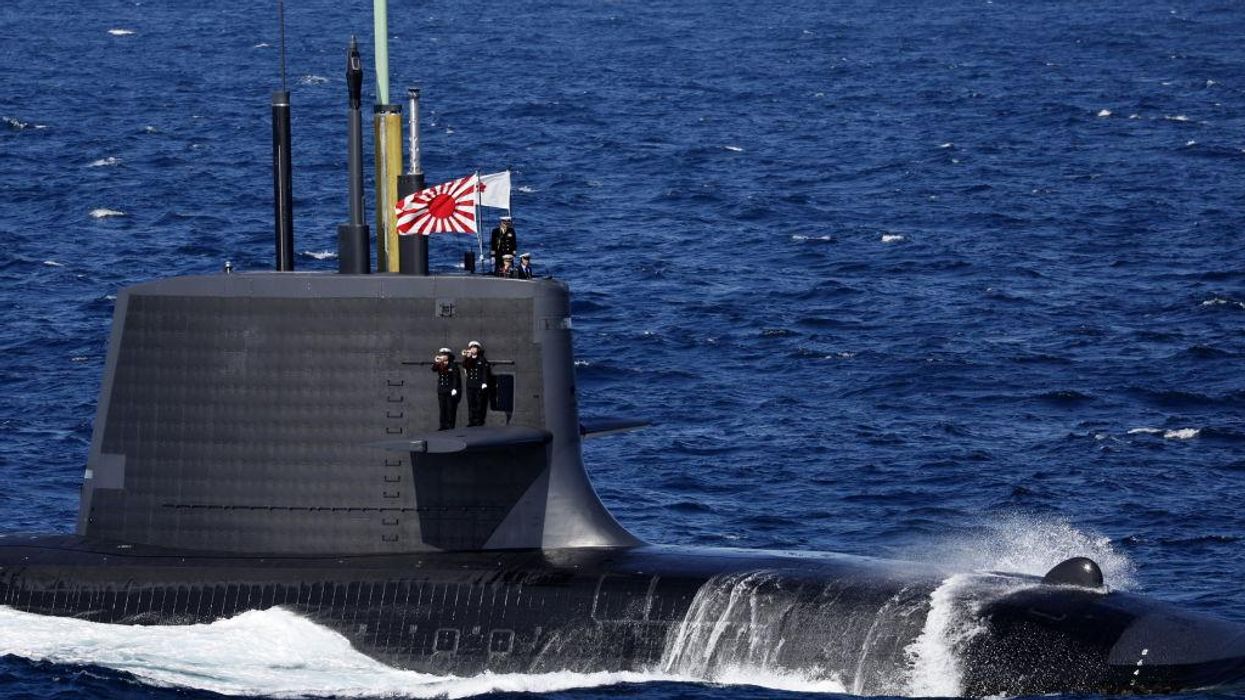
Photo by Issei Kato / Pool/Anadolu Agency via Getty Images

Japan announced Friday that it will double its military spending and acquire counterstrike weaponry fit for engaging China in a shooting war.
This move, previously urged by assassinated former Japanese Prime Minister Abe Shinzo, signals both a recognition of the geopolitical threat posed by China and a shift away from the pacifist posture adopted by postwar Japan.
The Japanese cabinet approved the new "National Security Strategy, National Defense Strategy and Defense Buildup Program," on Friday, thereby committing to increase military spending to 2% of the nation's GDP.
This increase will amount to approximately $320 billion (43 trillion yen) over the next five years, hitting an annual total of nearly $80 billion by 2027, reported the New York Times.
U.S. Ambassador to Japan Rahm Emanuel said in response to the move, "Today, Prime Minister Kishida ushered in a new era in the defense of democracy. I want to congratulate him on his leadership in meeting the strategic challenge in a comprehensive fashion. In short, he has put a capital 'D' next to Japan’s deterrence."
"The Prime Minister is making a clear, unambiguous strategic statement about Japan’s role as a security provider in the Indo-Pacific," added Emanuel.
Prime Minister Fumio Kishida indicated after the Friday cabinet meeting that Japan had hit a "turning point" requiring it to beef up its defense capabilities.
"In Japan’s neighboring countries and regions, there is more obvious shift toward attempts to unilaterally change the status quo by might," said Kishida.
Closely aligned with the U.S., the country borders three nations exhibiting varying degrees of hostility: China, Russia, and North Korea.
North Korea remains a major concern, particularly after the communist regime — hell-bent on accelerating its nuclear program — fired ballistic missiles over Japan. However, Tokyo is aware that Kim Jong Un's communist regime is not the greatest threat in the region.
China, alternatively, intends to become the world's biggest superpower by 2050. It is aggressively expanding its reach, increasing its military spending, and ever keen to seize the Japanese-controlled Senkaku Islands.
Japan's updated National Security Strategy states that the country faces "the most severe and complex security environment since the end of World War II," with China posing "the biggest strategic challenge" to Japan's efforts to maintain peace, safety, and stability for itself and others in the region.
This conclusion mirrors that reached by the Pentagon in its October National Security Strategy report, which stated that "by the 2030s the United States will, for the first time in its history, face two major nuclear powers as strategic competitors and potential adversaries": Russia and communist China.
Of the two, China is reckoned to be the far greater threat, as it is “the only competitor with both the intent to reshape the international order, and, increasingly, the economic, diplomatic, military, and technological power to advance that objective."
With the island nation of Taiwan only 70 miles away, the Japanese government needs to be vigilant, particularly in light of Chinese dictator Xi Jinping's recent claim that Beijing "will never promise to renounce the use of force ... and [reserves] the option of taking all measures necessary" against Taiwan and "interference by outside forces."
Whereas Japan previously had a strict self-defense-only postwar principle, Kishida noted that the current Self-Defense Force "is insufficient" to engage successfully in this new environment. Thus "a major change to Japan's postwar security policy" is required.
The Associated Press reported that Japan's planned counterstrike capability will be implemented in 2026 at the earliest and will likely depend upon the deployment of long-range Tomahawk missiles.
The deployment of such weaponry will mark an end to a 1956 Japanese government policy prohibiting counterstrike capability except as a final defense measure.
Extra to obtaining standoff missiles that could trip up potential attempts by Beijing to crush its neighbors at a distance, Japan seeks to have Mitsubishi Heavy Industry produce a surface-to-ship guided missile.
Christopher Johnstone, Japan chair at the Center for Strategic and International Studies, said, "An effective Japanese counterstrike capability would set the stage for a far deeper level of command-and-control integration with the United States than exists today."
U.S. National Security Advisor Jake Sullivan said in a statement, "Japan’s goal to significantly increase defense investments will also strengthen and modernize the U.S.-Japan Alliance. The new strategy reinforces Prime Minister Kishida’s deep commitment to international peace and nuclear nonproliferation."
Wang Wenbin, a spokesman for the Chinese communist regime, denounced Japan's new strategic plan, saying that Tokyo was "groundlessly discrediting China."
"Hyping up the so-called China threat to find an excuse for its military build-up is doomed to fail," said Wang.
Just days before the Japanese cabinet's approval of the new plan, China sent two destroyers and various other naval vessels through straits near Japan in an apparent signal of the People's Liberation Army's “capabilities in safeguarding China’s national sovereignty, territorial integrity and development interests.”